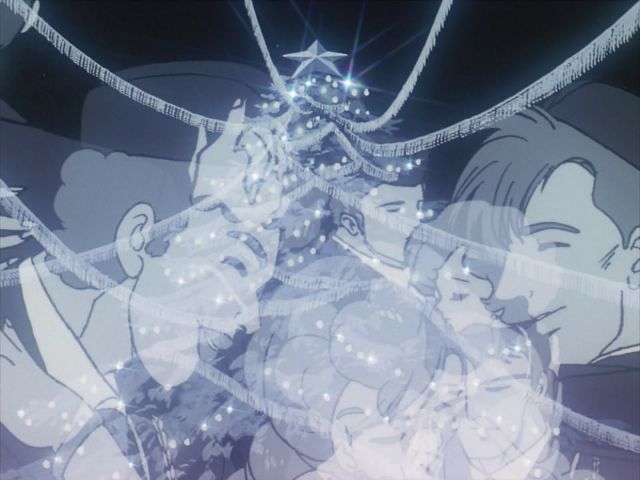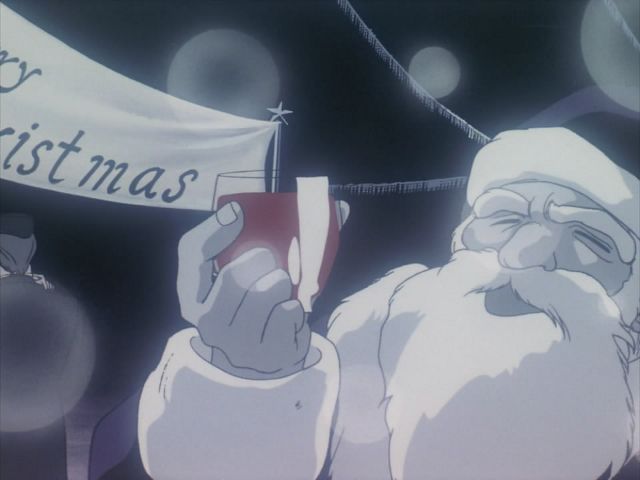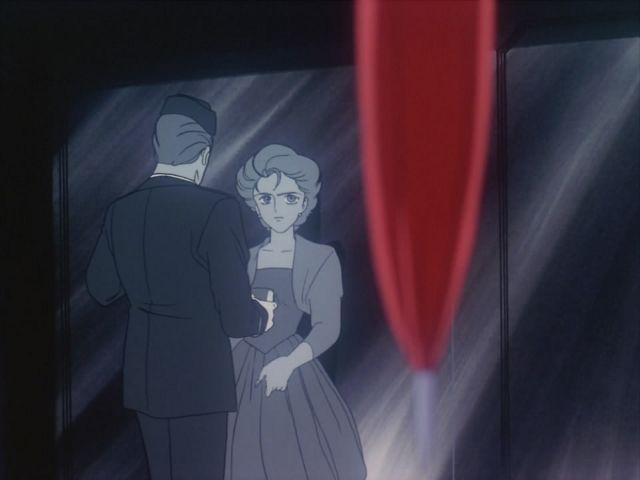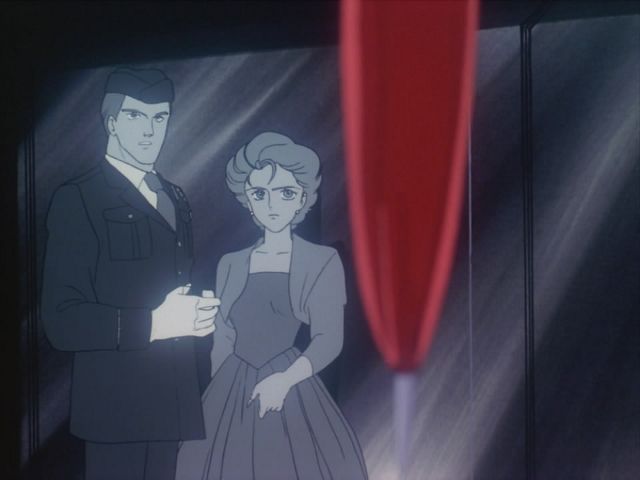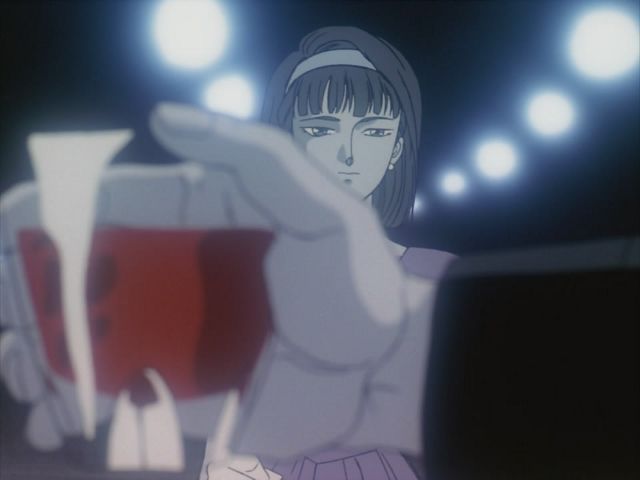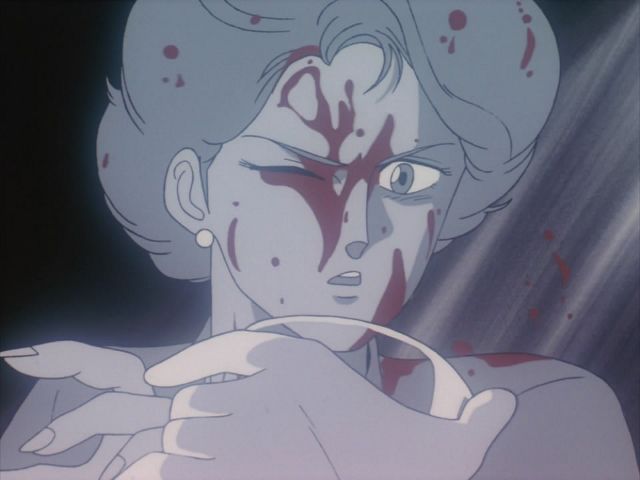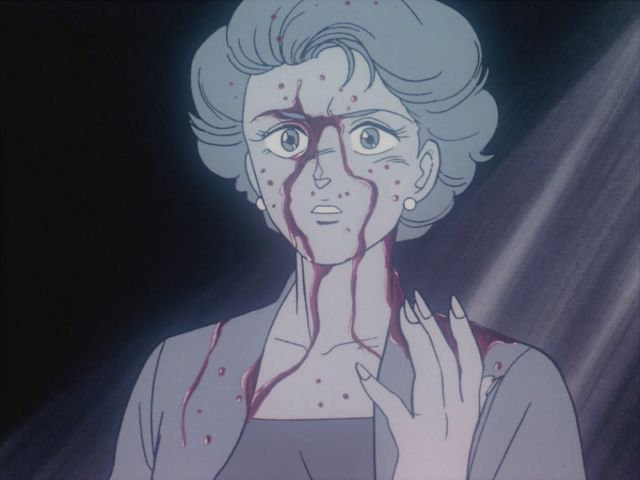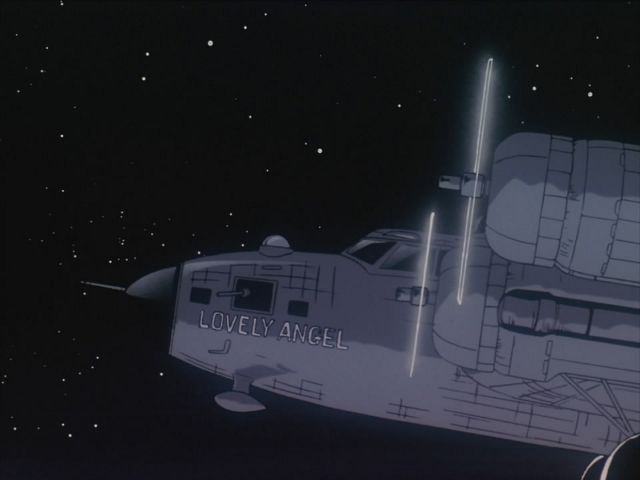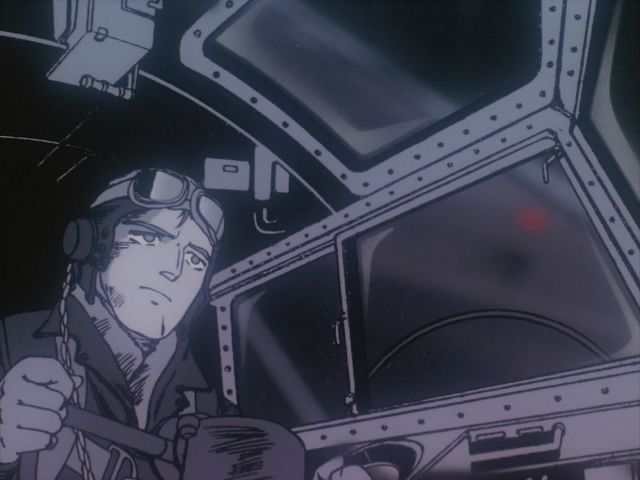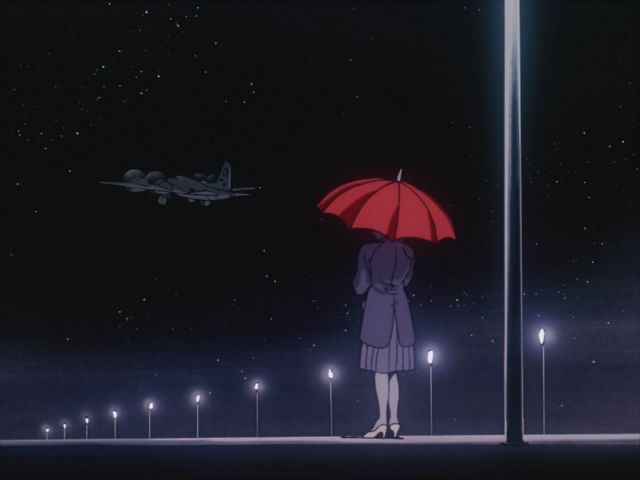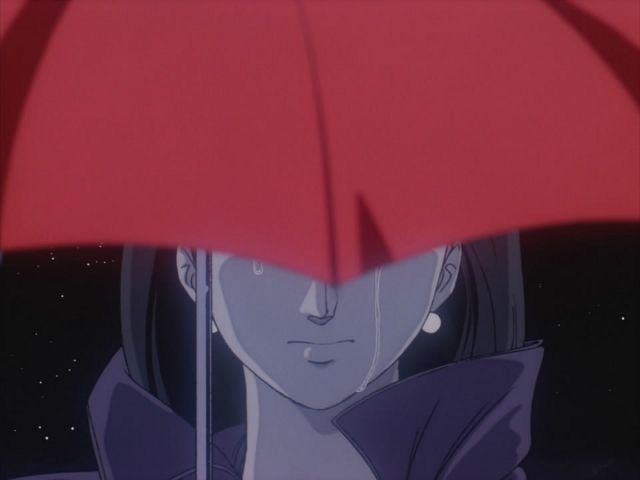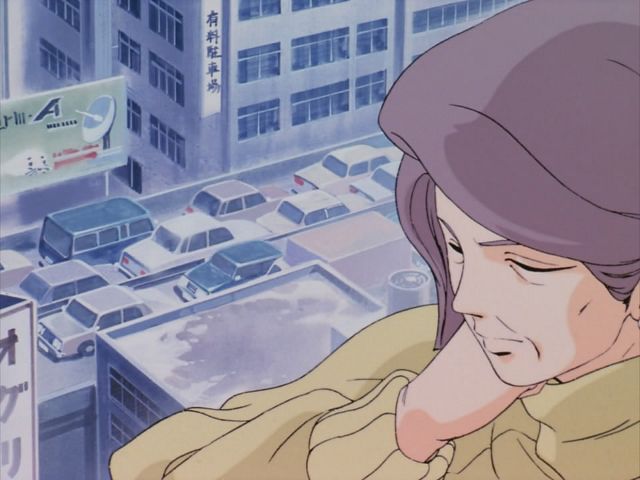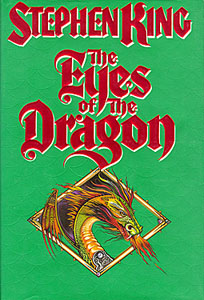Patlabor TV 10
Part 1: The Flashback
This is the best episode of the show so far. Perhaps not coincidentally it is the start of the first two-parter. I knew I was in for a treat when it opened with an excellently handled flashback, notable both for being completely wordless, as well as for strong stylization that compensates for limited animation in a manner worthy of Osamu Dezaki. It is a fine illustration of the old adage Less is more.
The setting of the flashback is established in an economical fashion.
We see a Christmas tree, against which ghostly couples in dancing poses float through. So we must be at a Christmas party, confirmed by the later appearance of a jovial Santa holding a glass of red wine.
The Christmas banner is in English, and the gentlemen are dressed in what looks like U.S. Army uniforms. Thus this is a party for American servicemen stationed on Japan. The music, slow jazz filtered through the faded pops and crackles of an old phonograph, place the party in post-war Japan of the late 1940s and early 1950s, when the American occupiers had pushed their way into Japanese society. The black-and-white color scheme confirms the time by evoking the era of black-and-white movies. (We later learn that the year is indeed 1950.)
The stroke of genius in the color scheme is the intrusion into the black-and-white milieu of a dark red. Red, the most eye-catching color of them all; red, the color of passion and violence. It is with red that the main actress enters the stage, as a red out-of-focus umbrella approaching a couple on the outskirts of the party. Even before we see this woman, we have a good sense of her personality from her umbrella. It looms in the foreground over the couple, containing a power barely concealed by the blur. The sharp point it comes to speaks of determination and resolve, and the lurking danger of violence underneath a mask of elegance. The woman talking to the man turns slightly towards the umbrella, acknowledging the intruder's presence with a look of suspicion and mistrust. Catching her shift, the man turns around to face the women with a questioning expression.
Tension crystallizes in the air. The sense of past history between these three is palpable.
In the next shot, when the umbrella owner's face appears shrouded behind the man's hand, large and out-of-focus, we get a sense of what that past history might be. A new woman has stolen the umbrella lady's lover away from her, but she is determined to not let it stay that way. Their faces drift towards each other, as the spark of chemistry ignites between them. The new woman, seeing this, snatches the wine glass from the man's hand, the wineglass that had been lurking as another source of connection between the two people holding red, but before she can act the umbrella woman snatches the glass and throws it back into her face.
With the limited color palette, the red wine dripping down her face takes on the appearance of blood.
We are left in no doubt of who is the stronger woman, and who has been chewed up and cast aside. This shot is the last we see of the new woman, as the two others join hands and rekindle their romance in a dance. As they stare into each other's eyes, their faces floating past each other, the music in the back fades out, replaced by the hum of an airplane's engines. Their bliss was all too fleeting.
The name of the plane is a reference to the Lovely Angels, the official name of the Dirty Pair in the eponymous series. The storyboarder of this episode, Toshifumi Takizawa, was the director of the Dirty Pair TV show.
Suddenly we are on a runway watching a plane taking off. A peek into the plane reveals that it is the man who is piloting it.
His figure looks small against the glass windows that take up most of the frame, the windows holding him inside the machine.
The woman watches alone, red umbrella in hand. The elegance of this composition is admirable. The upward curving slope of the lights leads the eye to the woman, who is marked off by a pole running through the length of the shot. In contrast to the plane, pointed away from her as it flies freely through the air, she is grounded and caged by the vertical bars of the lights and the poles. Her surroundings have become a prison, keeping her apart from the man she loves.
While her eyes are shielded by the umbrella, streaming tears come into view beneath it, speaking of her deep pain and sorrow. She could save her man from other women, but she could not save him from his duty as a soldier.
The whole sequence feels like a memory recalled from many years' distance, when time has worn away the incidentals into hazy generalities but specific moments of emotional power are still vividly seared into the brain. So when a fade dissolve transitions us into the present day, revealing that what we have been inhabiting are the dreamy memories of an elderly woman dozing off, it comes as no surprise.
These two minutes are a prime example of how simple touches are all that is needed to tell a story. Flashy animation, detailed art, dramatic voice acting none of that is necessary. Thought, care, and creativity that is what is essential.

